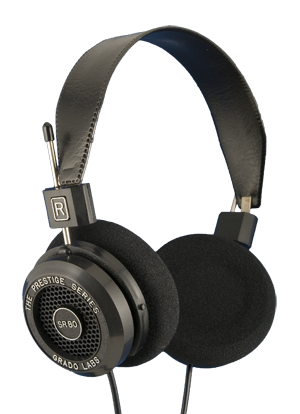


Though many of us have dreamed of marathon gaming sessions in custom-built home theaters with wall-sized HD projection, ergonomically correct massage chairs and glorious surround sound, it's a lot more likely that most of us are sitting too close to a monitor on a sofa with permanent ass-indentations. Or maybe an oversized beanbag if it's a "Mom's Basement" scenario. Chances are, a lot of us are in apartments, or at least in places where a realistic barrage of explosions, volleys of gunfire, or "Hey! Listen!" would not be appreciated by most of the co-inhabitants.
And dammit, we would all do well to remember that being able to play videogames at any volume is a luxury which we should not take for granted. However, that doesn't mean we can't try to maximize the experience as much as we can within the confines of the space we have. And the obvious thing to do, when faced with limitations on how much sound you can pump into a room is to cut out the middle man and pump it directly into your own ears.
Recently, Gameranx has had the opportunity to test and review multiple sets of headphones. First in our series of reviews was the SR80 from Grado Labs' Prestige Series.
Grado Labs has a fairly charming backstory: It's a family-run business founded in 1953 in Brooklyn, New York (where it remains to this day) by opera singer Joe Grado. I'm told that the company is currently operated by the second generation of Grados, who are busy training the third to take the reins someday.
With that information in mind, it was easy for me to appreciate the retro styling of the SR80. The headphones are can-style, and are approximately 3" in diameter, with a broad headband and adjustable points of articulation at each can. There is a refreshing lack of any unnecessary, quasi-futuristic details. Call me a hipster if you must, but I don't really want my headphones to look like robots in disguise. It makes me think that, regardless of whether my iPod says that I'm listening to Darkthrone or ABBA, it's all going to sound like Linkin Park.
Another plus: The strain relief of the cord, both at the cans and the spot where the right and left cable join is nice and sturdy. Insubstantial strain relief (which is more common with earbuds) will often cause one side of a pair of phones to go out. Unless you listen to nothing but audiobooks, this is not merely annoying, but ruins the sound completely. As someone who can be hard on headphones (between gaming, recording, shoving them in coat pockets while running, and the occasional absent-minded fidgeting…), this is something I specifically look for in any pair for which I'm making a moderate investment.
The only immediate downside I could see to these headphones is that the bare foam cushions on them can actually chafe the ears after a while. I can't help but feel that these would benefit from being covered in some way, though it's possible that this would compromise their sound too much.
When evaluating the SR80, I opted for a 3-part test (because another thing I look for when making a moderate investment in headphones is the ability to use them for more than one purpose), the first section of which was a few gaming sessions. I went though the entire Diablo III beta with these, as well as a few levels of Little Big Planet, FFXIII (look, it's for another article. I didn't enjoy it, okay?) and finally some Skyrim. As I've probably mentioned like five million times, I'm really into sound effects, particularly snow-crunching footsteps and other weather noises. I mean, I like explosions, fire, and the slaying of dragons and demons as well, but these things can be made to sound impressive with even the most meager of speakers. I think the true measure of a quality set of headphones with regard to gaming is the smaller environmental noises.
And I was not disappointed. The SR80 delivered nuanced, immersive audio that was as close to putting me right in the game as I could be without, you know, total sensory virtual reality. The bass did not distort at all, and the higher, sibilant sounds were crisp without any of the clipping that tends to happen with smaller speakers or run-of-the-mill phones. About the only thing the SR80 couldn't make sound good was Vanille. Alas, some things in life are simply not possible to accomplish, and perhaps it is madness even to try.
The second part of my test was pretty simple and involved simply using the SR80 for general daily operations. I happen to live in Seattle, which has semi-decent public transport. I'm not going to say it's great, because it's certainly no BART, but the King County Metro experience is made infinitely more pleasant with the use of headphones. Because the SR80 has employs "open air" headphones, the sound does tend to have a very warm, natural feel to it. This is because air passes freely through the headphones, rather than directly into the ear canal. The upside to this is that the sound quality is such that you could probably rupture your eardrums cranking up the volume before you'd have noticeable distortion, although I am not sure what effect blood flowing from the ears would potentially have on sound quality (that is a variable I would prefer not to test). The downside to this, however, is that background noises are not blocked completely. While this can be useful for instances where the listener needs to maintain at least a degree of situational awareness, it also doesn't do much to keep out the complaining commuters, screeching crackheads and crying babies ons trains and buses. For me, this is not a dealbreaker, but it is something to consider.
The third part of my test was actually to use these headphones for recording purposes. I've used them consistently since acquiring them for Gameranx's weekly podcast, and they've done just fine, but the main purpose of headphones there is simply to minimize echo. I wanted to really take the SR80 for a serious test drive. I am not sure, gentle readers, where your specific hobbies and interests lie, but among my circle of gaming friends, quite a lot of us are also musicians, and so the idea of multi-purpose is emphasized once more.
Before I lived in my current place, I lived on the edge of the city in a house with a recording studio. The basement was fully underground with thick carpet and waffle-like foam on the walls. I moved to a one-bedroom on the second floor of a building in the Capitol Hill neighborhood with high ceilings and hardwood floors (not because I am particularly fancy, but simply because most of the buildings in this section of town were built in the 1920s, and they pretty much all have these things).
At my current place, I record in the washroom (because it is the smallest, most noise-minimizing space in the apartment) with a bunch of beach towels pinned to the walls, and since I am mostly making music for my own amusement, this is usually fine. The only issues I usually encounter are the picking up of footsteps and chatter in the hallway, or sirens from outside. However, the open-air phones of the SR80 were mildly problematic in this respect, because the extra-noise turned out to be a two-way street. Not only do they not block outside noises, but there is a significant amount of bleed-through from them, enough that my click track was actually picked up by my microphone. This ended up not being a huge problem for the recording I made (which you can listen to here if you so desire), as it was nearly eliminated with a noise gate and covered by the percussion track, but don't use these to record yourself a cappella if you need a metronome. Which I do.
On the whole, I would recommend the SR80 first and foremost as a throughly decent set of headphones for in-home use. Their superior sound quality is best employed for gaming or enjoying an expanded range of musical texture and dynamics in a space where background noises will be minimal, and the purpose of the headphones is to lessen rather than eliminate entirely the volume of sound in the room. They will certainly be fine for street wear, especially if you don't happen to care much if other people can hear what you're listening to, and don't mind that you'll actually be able to hear them when they ask about it. As far as recording goes, the bleed-through isn't ideal, but it's mostly a minimal inconvenience, unless you're some kind of analogue hipster.
Grado Labs SR80 comes standard with a 1/8" stereo plug and a 1/4" adaptor, and retails for USD 99.00.
Be sure to visit Grado Labs' website and its facebook page!




 Girlfriend Mode: Casual Sexism in the Game Industry
Girlfriend Mode: Casual Sexism in the Game Industry Fire Emblem: Awakening Wiki .
Fire Emblem: Awakening Wiki . Dark Souls 2 Estus Shard, Sublime Bone Dust and Fragrant Branch Locations Guide
Dark Souls 2 Estus Shard, Sublime Bone Dust and Fragrant Branch Locations Guide 20 Amazing Pokemon Re-imagined by an Artist
20 Amazing Pokemon Re-imagined by an Artist Reincarnation: Riley’s Out Again Walkthrough
Reincarnation: Riley’s Out Again Walkthrough